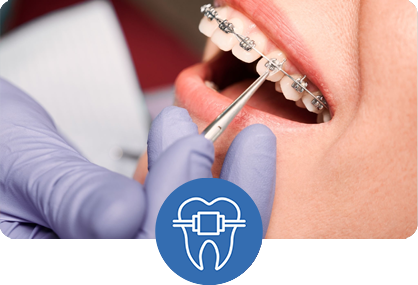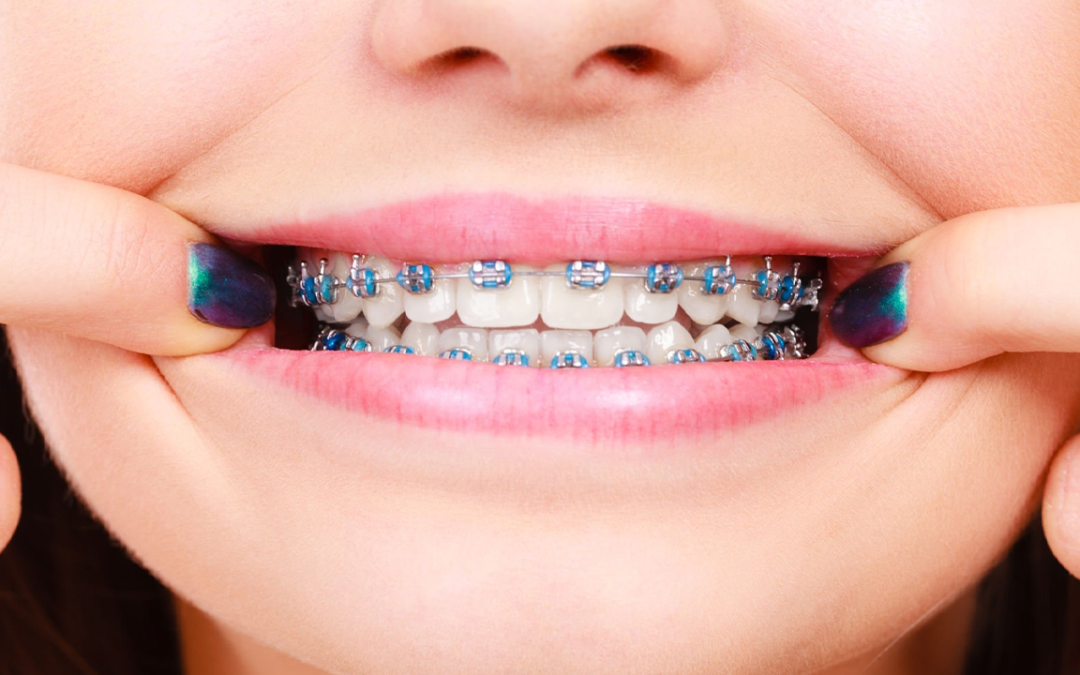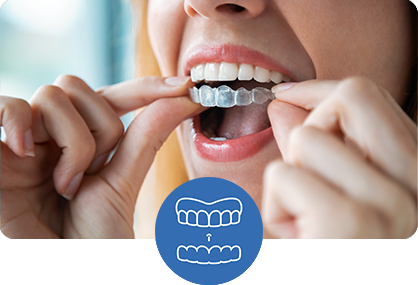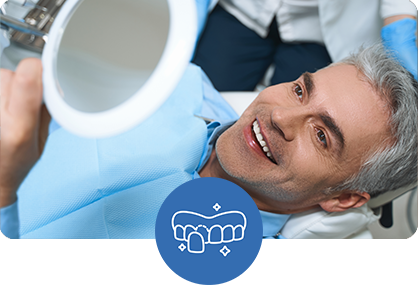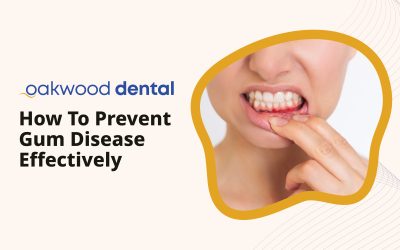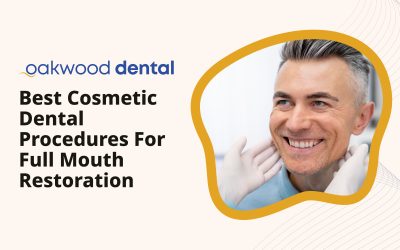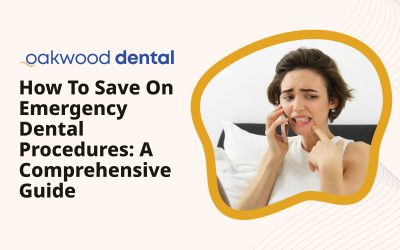Key Takeaways
- Modern adult orthodontic options include traditional metal braces, ceramic braces, lingual braces, self-ligating systems, and clear aligners like Invisalign
- Each bracing system offers unique advantages in terms of visibility, comfort, maintenance, and treatment time
- The ideal braces type depends on your specific dental condition, lifestyle preferences, and aesthetic concerns
- Invisalign offers a nearly invisible alternative to traditional braces with removable aligners
- Regular orthodontic follow-ups are essential regardless of which bracing system you choose
- Post-treatment retention is critical for maintaining your newly aligned smile
- Treatment effectiveness varies by orthodontic issue, with traditional braces generally offering the most versatility for complex cases
- Adult orthodontic treatment requires special considerations due to fully developed jawbones and potential existing dental work
- Most orthodontic options can be customized to balance aesthetic concerns with treatment effectiveness
- Financial planning options including insurance, FSAs, and payment plans can make orthodontic treatment more accessible
Introduction to Adult Orthodontic Treatment
The journey toward a perfectly aligned smile is no longer just for adolescents. Today, more adults than ever are pursuing orthodontic treatment to enhance both their appearance and oral health. At Oakwood Dental Clinics, we understand that adult patients have unique concerns and priorities when considering braces. The transformative benefits of orthodontic treatment extend far beyond aesthetics, addressing functional issues that can impact speech, chewing efficiency, and long-term dental health.
Whether you’re addressing long-standing alignment issues or experiencing new changes in your dental structure, modern orthodontics offers sophisticated solutions tailored to adult lifestyles and preferences. The stigma once associated with adult braces has diminished significantly, with approximately one in four orthodontic patients now being over the age of 18. This shift reflects both increased awareness of orthodontic benefits and the development of more discreet treatment options that fit well with professional and social environments.
This guide explores the various braces options available for adults, highlighting their advantages, considerations, and suitability for different orthodontic needs. Our goal is to help you make an informed decision about which orthodontic solution aligns best with your dental requirements, lifestyle, and personal preferences. From traditional metal braces to cutting-edge clear aligner technology, we’ll examine how each option addresses specific treatment challenges and fits into the context of adult daily life.
Understanding Adult Orthodontic Needs
Adult orthodontic treatment differs significantly from treatment for adolescents. As an adult seeking orthodontic care, you may have specific concerns and circumstances that require specialized attention. The physical differences between adult and adolescent patients require distinct approaches to treatment planning, mechanics, and expected outcomes. Understanding these unique considerations is essential for setting realistic expectations and achieving optimal results.
Unique Considerations for Adult Patients
Adults often present with more complex dental histories, including:
- Previous dental work such as crowns, bridges, or implants that must be carefully integrated into orthodontic treatment plans
- Worn or damaged teeth from years of use, grinding, or previous trauma that may complicate tooth movement
- Periodontal (gum) issues that may complicate treatment and require concurrent management with a periodontist
- Fully developed jawbones that are less malleable than those of growing adolescents, potentially limiting certain treatment approaches
- Temporomandibular joint (TMJ) concerns that must be monitored throughout orthodontic treatment
- Restorative needs that may need to be addressed either before, during, or after orthodontic treatment
These factors don’t prevent successful orthodontic treatment, but they do require a more tailored approach. At Oakwood Dental Clinics, our orthodontic specialists conduct thorough evaluations to develop customized treatment plans addressing these unique adult considerations. Our comprehensive assessment includes detailed imaging, functional analysis, and interdisciplinary consultation when necessary to ensure all aspects of your oral health are integrated into your orthodontic care plan.
Common Orthodontic Issues in Adults
The most frequently addressed orthodontic concerns among our adult patients include:
1. Crowded or crooked teeth – Beyond looks, misaligned teeth can be hard to clean properly, increasing risk for decay and gum disease. This difficulty in maintaining proper oral hygiene often leads to more plaque buildup, which can contribute to both local inflammation and health issues over time.
2. Spacing issues – Gaps between teeth can trap food particles and affect your smile’s appearance. These spaces not only create appearance concerns but can also lead to increased risk of food getting stuck, gum inflammation, and potential speech problems depending on their location and size.
3. Bite misalignments – Including overbites, underbites, crossbites, and open bites that can cause uneven wear, jaw pain, and difficulty chewing. If not treated, these bite problems often get worse, leading to faster tooth wear, jaw joint problems, and chronic headaches or facial pain.
4. Shifting of previously straightened teeth – Many adults who had braces as teenagers experience shifting later in life, especially if they didn’t wear retainers as directed. This shifting is a natural process that happens throughout life as part of normal aging, but can be especially frustrating for those who already had orthodontic treatment.
Understanding your specific orthodontic needs is the first step toward selecting the most appropriate bracing system for your situation. During your cosmetic dental consultation, we’ll thoroughly evaluate these factors to recommend the most effective treatment options. Our diagnostic process includes comprehensive imaging, functional analysis, and detailed discussion of your aesthetic goals and lifestyle requirements.
Traditional Metal Braces for Adults
Despite newer, less visible alternatives, traditional metal braces remain a cornerstone of orthodontic treatment due to their versatility, effectiveness, and reliability in treating even the most complex alignment issues. These time-tested appliances continue to evolve with technological advancements that enhance both their performance and patient comfort, making them a viable option for many adults seeking comprehensive orthodontic correction.
Modern Advancements in Metal Braces
Today’s metal braces bear little resemblance to the bulky “metal mouth” appliances of decades past. Modern advancements have transformed traditional braces into more comfortable, efficient treatment options:
- Smaller, less noticeable brackets that occupy significantly less tooth surface area than previous generations
- Heat-activated archwires that use your body temperature to help teeth move more quickly and with less pain, adapting to tooth movement in real-time
- More efficient tooth movement requiring fewer adjustments and potentially shortening overall treatment duration
- Improved bonding materials that reduce the risk of brackets detaching while minimizing potential enamel damage during removal
- Specialized coatings that reduce friction between wires and brackets, enhancing comfort and treatment efficiency
- Customized bracket placement using computer-aided design for more precise tooth movement and potentially faster results
These innovations have made metal braces a viable option for many adults who might have previously dismissed them based on outdated perceptions. The technological evolution of these appliances continues to improve both the patient experience and treatment outcomes.
Advantages of Traditional Braces for Adults
Metal braces offer several distinct advantages that continue to make them a popular choice:
1. Unmatched versatility – Capable of treating virtually any orthodontic issue, from simple to severe, including complex rotations, significant bite problems, and substantial alignment issues that may be beyond the scope of other treatment options.
2. Cost-effectiveness – Generally more affordable than newer alternatives, making comprehensive orthodontic treatment accessible to a broader range of patients while delivering reliable, predictable results.
3. No compliance issues – Unlike removable options, fixed braces work continuously, eliminating concerns about patient adherence to treatment protocols and ensuring consistent progress throughout the treatment period.
4. Potential for faster treatment – Often achieve results more quickly for complex cases due to the precise control they offer orthodontists and their ability to apply forces in multiple directions at once.
5. Durability – Less prone to damage than ceramic alternatives, reducing the likelihood of emergency visits and treatment delays due to appliance breakage or malfunction.
Many of our adult patients at Oakwood Dental Clinics’ orthodontics department choose metal braces for their proven track record and comprehensive treatment capabilities, particularly when dealing with significant bite issues or severely misaligned teeth. The predictable outcomes and ability to address complex orthodontic problems make traditional braces an enduring solution in modern orthodontic practice.
Ceramic Braces: The Aesthetic Alternative
For adults concerned about the visibility of traditional metal braces, ceramic braces offer a more discreet yet equally effective alternative. These braces function identically to metal braces but feature tooth-colored or clear brackets that blend more naturally with your teeth. This aesthetic compromise has made ceramic braces increasingly popular among image-conscious adults who require the comprehensive correction capabilities of fixed appliances but desire a less conspicuous treatment option.
How Ceramic Braces Work
Ceramic braces operate on the same principles as their metal counterparts:
- Brackets bonded to the front surface of each tooth using specialized dental adhesives that provide secure attachment while minimizing enamel damage
- Archwires threaded through brackets to apply gentle pressure, typically available in tooth-colored or frosted options to further enhance aesthetics
- Periodic adjustments to gradually shift teeth into proper alignment, allowing for precise control over complex tooth movements
- Elastic ligatures (the small bands that hold the wire to the bracket) available in clear or tooth-colored options to maintain the discreet appearance
The primary difference lies in the materials used. High-quality dental ceramic creates brackets that are far less noticeable while maintaining the necessary strength for effective treatment. Advanced manufacturing techniques have significantly improved the durability and stain resistance of these materials compared to earlier generations of ceramic brackets.
Pros and Cons of Ceramic Braces
Advantages:
- Aesthetic appeal – Less noticeable than metal braces, particularly from a distance, making them suitable for professionals and those frequently in social or public-facing situations
- Equally effective – Provide the same level of control and versatility as metal braces, capable of addressing complex orthodontic issues that may be beyond the scope of clear aligner therapy
- Comfortable – Many patients report that ceramic brackets cause less irritation to cheeks and lips due to their smoother surface and rounded contours
- Stain resistance – Modern ceramic materials resist staining better than earlier versions, maintaining their aesthetic appearance throughout treatment
- Psychological comfort – The reduced visibility often translates to greater confidence during treatment, particularly for adults concerned about professional appearance
Considerations:
- More fragile – Ceramic brackets can be more prone to chipping or cracking than metal, potentially requiring additional repair appointments
- Slightly larger – May be somewhat bulkier than metal brackets to compensate for the reduced strength of ceramic material
- Elastic ties may discolor – The clear or white elastic ties used with ceramic brackets can stain between adjustments, particularly with consumption of coffee, tea, curry, or other pigmented foods
- Treatment time – Some cases may progress slightly slower than with metal braces due to increased friction between ceramic brackets and archwires
- Higher cost – Generally more expensive than traditional metal braces due to the specialized materials used in their construction
Ceramic braces represent an excellent middle ground for adults seeking a balance between effectiveness and aesthetics. They’re particularly popular among professionals and others who frequently interact with the public but require comprehensive orthodontic treatment that clear aligner systems may not adequately address. The combination of reliable performance and improved appearance makes ceramic braces a compelling option for many adult orthodontic patients.
Lingual Braces: The Truly Hidden Option
For adults who require the effectiveness of traditional braces but desire maximum discretion, lingual braces offer a compelling solution. These specialized braces are mounted on the tongue-side (lingual surface) of your teeth, making them virtually invisible from the front. This innovative approach provides comprehensive orthodontic correction while addressing the aesthetic concerns that often deter adults from pursuing necessary treatment.
How Lingual Braces Differ
Lingual braces share the same fundamental components as traditional braces—brackets and wires—but with several key differences:
- Placement – Attached to the inner surface of teeth, completely hidden from view during normal social interactions and speaking
- Customization – Each bracket is custom-made to fit the unique contours of your teeth’s inner surfaces, often utilizing advanced CAD/CAM technology for precise fabrication
- Technique – Requires specialized training for orthodontists to place and adjust effectively, as working on the lingual surface presents unique challenges in terms of visibility and access
- Design modifications – Brackets are typically lower-profile and specially contoured to minimize tongue irritation and speech interference
- Treatment mechanics – Forces are applied differently due to the inverse bracket positioning, requiring specialized treatment planning
This innovative approach allows for comprehensive orthodontic treatment without any visible evidence of braces, making it particularly attractive for adults in public-facing professions or those with significant aesthetic concerns. The completely concealed nature of lingual braces provides unparalleled discretion throughout the treatment process.
Benefits and Limitations of Lingual Braces
Advantages:
- Complete invisibility – The only fixed braces option that’s truly invisible from the front, allowing patients to maintain their professional appearance throughout treatment
- Effective for complex cases – Provides the same level of control as traditional braces, capable of addressing significant alignment and bite issues
- No concerns about removable appliance compliance – Fixed in place for continuous treatment, eliminating the need for patient discipline in wearing removable devices
- No risk of visible demineralization – Any temporary changes to tooth enamel occur on the hidden inner surface, preserving the aesthetic appearance of the smile’s visible surfaces
- Potentially better for certain musicians – May interfere less with playing wind or brass instruments compared to traditional braces
Considerations:
- Initial adjustment period – May cause more tongue irritation and speech difficulties at first, typically requiring 1-2 weeks for adaptation
- Accessibility challenges – More difficult to clean around brackets and wires, necessitating specialized oral hygiene tools and techniques
- Appointment length – Adjustments typically take longer due to more challenging access, requiring additional chair time
- Not suitable for all cases – Very severe crowding or unusually small teeth may not accommodate lingual brackets due to space limitations
- Higher cost – Generally the most expensive fixed braces option due to customization requirements and technical complexity
- Limited provider availability – Fewer orthodontists offer this specialized treatment option due to the advanced training required
At Oakwood Dental Clinics, our orthodontic specialists can determine if you’re a good candidate for lingual braces during your comprehensive evaluation. For many image-conscious adults, the additional investment in this discreet technology proves well worth it for the confidence of undergoing orthodontic treatment without visible braces. The ability to maintain a professional appearance while achieving comprehensive orthodontic correction makes lingual braces an attractive option for those whose personal or professional circumstances make visible orthodontic appliances problematic.
Self-Ligating Braces: Modern Efficiency
Self-ligating braces represent an innovative advancement in fixed orthodontic appliances, offering potential advantages in comfort, hygiene, and treatment efficiency. These modern systems eliminate the need for elastic ties or metal ligatures to hold the archwire in place. Instead, they utilize a specialized mechanism built into each bracket, creating a more streamlined system that can reduce friction and potentially accelerate treatment in certain cases.
How Self-Ligating Systems Work
Unlike traditional braces that use elastic or metal ties to secure the archwire to each bracket, self-ligating braces feature specialized clips or doors built into each bracket that hold the wire in place:
- Passive systems – Allow the wire to move freely within the bracket, potentially reducing friction and enabling more efficient tooth movement particularly in the initial alignment phases
- Active systems – Apply additional pressure to the wire as teeth approach their final positions, providing greater control during the finishing stages of treatment
- Streamlined design – Generally feature smaller, less prominent brackets than traditional systems, reducing bulk and potentially improving comfort
- Reduced binding – The elimination of ligatures decreases the resistance between wire and bracket, potentially allowing teeth to move more freely
- Simplified adjustments – The built-in door or clip mechanism facilitates faster wire changes during adjustment appointments
This design creates a more friction-free environment that may allow for more efficient tooth movement and potentially fewer adjustment appointments. The technology continues to evolve, with manufacturers developing increasingly sophisticated bracket designs to optimize both comfort and treatment efficiency.
Advantages of Self-Ligating Braces
Self-ligating systems offer several potential benefits that make them worth considering:
1. Enhanced comfort – Without protruding elastic ties, these braces tend to cause less irritation to cheeks and lips. The lower-profile design and smoother contours reduce the abrasion that commonly occurs with traditional bracket systems.
2. Easier hygiene – Fewer components mean fewer places for food and plaque to accumulate, potentially reducing the risk of decalcification and gingival inflammation during treatment. The absence of elastics eliminates areas where bacteria commonly collect.
3. Potentially shorter appointments – Adjustments can be completed more quickly without the need to replace elastics, with some studies suggesting up to 30% reduction in chair time for routine adjustments.
4. Reduced friction – May allow for more efficient tooth movement in certain cases, potentially shortening overall treatment duration for some patients, particularly those with mild to moderate alignment issues.
5. Available in aesthetic options – Many self-ligating systems offer clear or ceramic bracket options, combining the efficiency of self-ligation with the aesthetic benefits of less visible appliances.
Our orthodontic team can evaluate whether self-ligating braces might be the optimal choice for your specific treatment needs. These systems represent an excellent middle ground between traditional braces and more aesthetic options, combining modern efficiency with proven effectiveness. The technological advantages of self-ligating systems continue to make them an increasingly popular choice among both practitioners and patients seeking state-of-the-art orthodontic care.
Clear Aligners: The Invisalign Revolution
The introduction of clear aligner therapy, most notably Invisalign, has revolutionized adult orthodontics by offering a nearly invisible, removable alternative to fixed braces. This innovative approach has made orthodontic treatment more accessible and appealing to adults who might otherwise avoid addressing their alignment concerns. Since its introduction in the late 1990s, Invisalign technology has continuously evolved, expanding its capabilities to address increasingly complex orthodontic issues while maintaining its signature aesthetic advantage.
How Invisalign Works
Invisalign utilizes a series of custom-made, clear plastic aligners that gradually shift your teeth into proper alignment:
- Digital planning – Treatment begins with a 3D digital scan of your teeth and sophisticated computer modeling. This proprietary ClinCheck® software allows for precise planning of tooth movements throughout the entire treatment sequence.
- Custom fabrication – A series of aligners is created specifically for your treatment plan using advanced thermoplastic materials engineered for optimal force delivery and comfort. Each aligner is trimmed to your exact gum line for improved comfort and aesthetics.
- Sequential progression – Each aligner is worn for approximately 1-2 weeks before progressing to the next in the series. This gradual approach allows for controlled, predictable tooth movement with minimal discomfort.
- Gradual movement – Each aligner makes incremental adjustments to tooth position, typically moving teeth 0.25-0.3mm per aligner. This precise, incremental approach helps maintain comfort throughout treatment.
- Refinement as needed – Additional aligners may be created to perfect final positioning. This mid-course correction capability allows for adjustments to the treatment plan as teeth respond to the prescribed movements.
This technology-driven approach allows patients to visualize their treatment outcome before even beginning, providing confidence in the process and results. The virtual treatment planning also facilitates clear communication between practitioner and patient regarding treatment goals and expectations.
Benefits of Invisalign for Adults
Clear aligner therapy offers numerous advantages that make it particularly well-suited to adult lifestyles:
1. Aesthetic appeal – Nearly invisible when worn, allowing for confident smiling throughout treatment. The transparent nature of the aligners means most people won’t notice you’re undergoing orthodontic treatment, eliminating the self-consciousness many adults associate with traditional braces.
2. Removability – Can be taken out for eating, drinking, and special occasions (though 20-22 hours of daily wear is recommended). This flexibility allows you to maintain your normal diet without restrictions and removes obstacles for important professional or social events.
3. Improved oral hygiene – Allows for normal brushing and flossing without navigating around brackets and wires. This advantage significantly reduces the risk of developing white spots, gingivitis, or cavities during treatment—common complications with fixed appliances.
4. Comfort – No brackets or wires to cause irritation to cheeks and lips. The smooth plastic surface of aligners eliminates the sore spots commonly experienced with traditional braces, particularly during the initial adjustment period.
5. Fewer emergency visits – No broken brackets or poking wires to address, reducing the need for unscheduled appointments and minimizing disruption to your busy schedule.
6. Predictable results – Advanced computer modeling provides clear treatment expectations and timeline projections. The ability to visualize the end result before starting treatment offers peace of mind regarding the anticipated outcome.
At Oakwood Dental Clinics, we’ve helped countless adult patients achieve their ideal smiles with Invisalign. The system has evolved significantly since its introduction, now capable of addressing increasingly complex orthodontic issues that once required traditional braces. Innovations such as precision attachments, elastics integration, and advanced aligner materials have expanded the scope of cases that can be successfully treated with this technology.
Invisalign Limitations and Considerations
While Invisalign offers remarkable versatility, it’s important to understand its limitations:
- Compliance-dependent – Requires disciplined wear (20-22 hours daily) to achieve optimal results. Unlike fixed appliances that work continuously, the effectiveness of clear aligner therapy depends heavily on patient adherence to the prescribed wear schedule.
- Not ideal for all cases – Very severe rotations, significant bite issues, or large gaps may be better addressed with fixed appliances. Certain tooth movements, particularly extrusion and severe rotations of round teeth, can be challenging with aligner therapy alone.
- Attachments may be required – Small tooth-colored “buttons” are often placed on teeth to facilitate more complex movements. These composite attachments, while less noticeable than brackets, do impact the invisibility factor of treatment to some degree.
- Lifestyle adjustments – Requires removing aligners before eating or drinking anything besides water, then brushing before reinserting. This necessity can be inconvenient in certain social or professional situations and requires carrying oral hygiene supplies throughout the day.
- Potential for lost or damaged aligners – The removable nature of aligners introduces the possibility of misplacement or damage, which could potentially delay treatment progress if replacement aligners are needed.
During your Invisalign consultation, our specialists will thoroughly evaluate your specific needs to determine if clear aligner therapy is the most appropriate solution for your orthodontic concerns. We’ll discuss both the advantages and limitations as they apply to your unique case, ensuring you have realistic expectations about what Invisalign can achieve for your particular situation.
Comparing Treatment Options: Which Is Right for You?
Selecting the ideal orthodontic treatment requires careful consideration of several factors, including your specific dental needs, lifestyle preferences, aesthetic concerns, and budget. Here’s a comprehensive comparison to help guide your decision. Understanding the relative strengths and limitations of each option will help you collaborate effectively with your orthodontist to select the treatment approach that best aligns with both your clinical needs and personal priorities.
Treatment Effectiveness by Condition
| Orthodontic Issue | Metal Braces | Ceramic Braces | Lingual Braces | Self-Ligating | Invisalign |
|---|---|---|---|---|---|
| Mild Crowding | Excellent | Excellent | Excellent | Excellent | Excellent |
| Moderate Crowding | Excellent | Excellent | Excellent | Excellent | Good |
| Severe Crowding | Excellent | Excellent | Good | Excellent | Limited |
| Spacing Issues | Excellent | Excellent | Excellent | Excellent | Excellent |
| Bite Correction | Excellent | Excellent | Good | Excellent | Moderate |
| Complex Rotations | Excellent | Excellent | Good | Excellent | Limited |
Lifestyle Considerations
When selecting your ideal orthodontic treatment, consider how each option aligns with your daily life and personal priorities:
1. Professional appearance concerns
- Invisalign and lingual braces offer the most discreet treatment, maintaining a professional appearance throughout the correction process
- Ceramic braces provide a moderate aesthetic compromise, being noticeable upon close inspection but less conspicuous than metal alternatives
- Metal braces, while visible, are increasingly accepted in professional settings and now feature smaller, less obtrusive designs than in previous decades
- Consider the nature of your profession and client interactions when weighing aesthetic factors in your decision
2. Dietary restrictions
- Removable aligners allow unrestricted eating (when removed), eliminating the food limitations associated with fixed appliances
- Fixed braces require avoiding certain foods that could damage brackets or wires, including hard, sticky, or excessively chewy items
- Dietary compliance is particularly important with ceramic brackets, which can be more prone to damage than metal alternatives
- Consider your typical diet and willingness to modify eating habits throughout treatment
3. Oral hygiene commitment
- Aligners simplify cleaning but require discipline in removing/replacing and maintaining the aligners themselves
- Fixed appliances necessitate more meticulous cleaning techniques, including specialized brushes and flossing tools
- Lingual braces present the greatest hygiene challenge due to their placement on the tongue side of teeth
- Realistic assessment of your oral hygiene habits and commitment is essential for treatment success
4. Speech considerations
- Lingual braces may temporarily affect speech more significantly due to their proximity to the tongue
- Invisalign typically causes minimal speech interference after a brief adaptation period
- Traditional braces have moderate initial impact on speech but adaptation usually occurs within 1-2 weeks
- Those whose professions involve public speaking may find this factor particularly important
5. Activity level
- Athletes may prefer Invisalign (with removal during contact sports) or require special mouthguards for fixed braces
- Musicians playing wind instruments may find lingual braces or Invisalign less disruptive to their performance
- Consider how treatment might interact with your recreational activities and hobbies
Our orthodontic specialists at Oakwood Dental Clinics will help you weigh these considerations against your treatment needs to determine the most appropriate solution for your unique situation. The ideal treatment balances clinical effectiveness with lifestyle compatibility, ensuring both successful outcomes and a positive treatment experience.
Preparing for Adult Orthodontic Treatment
Proper preparation can significantly enhance your orthodontic experience and treatment outcomes. Here’s what to expect and how to prepare for your journey toward a straighter smile. Taking the time to adequately prepare for orthodontic treatment helps ensure a smoother process, fewer complications, and ultimately more satisfying results.
Initial Consultation and Planning
Your orthodontic journey begins with a comprehensive evaluation:
- Diagnostic records – Including digital photographs, X-rays, and 3D scans of your teeth and jaws. These detailed records allow for precise analysis of your current dental condition and facilitate accurate treatment planning. Modern imaging techniques provide unprecedented detail for diagnosis and treatment simulation.
- Medical and dental history review – To identify any factors that might affect treatment, including previous dental work, periodontal conditions, TMJ issues, or systemic health concerns that could influence treatment approaches. This thorough review ensures that your orthodontic plan integrates with your overall health status.
- Discussion of goals and expectations – Clearly communicating what you hope to achieve through orthodontic treatment helps your provider tailor recommendations to your priorities. Whether functional improvement, aesthetic enhancement, or both are your primary motivations will influence treatment decisions.
- Treatment options presentation – Reviewing suitable approaches for your specific needs, including advantages, limitations, timeline projections, and relative costs of each potential solution. This educational component empowers you to make an informed decision about your care.
- Financial considerations – Discussing investment requirements and payment options, including insurance coverage, financing plans, and potential phasing of treatment to accommodate budgetary constraints. Transparency in financial planning helps eliminate surprises during the treatment process.
This thorough planning stage ensures that your treatment is precisely tailored to your unique dental structure and personal objectives. The time invested in comprehensive planning pays dividends in treatment efficiency and outcome satisfaction.
Preparing Your Mouth for Braces
Before beginning orthodontic treatment, addressing existing dental issues is essential:
- Completing necessary dental work – Treating cavities, gum disease, or other concerns to establish a healthy foundation for orthodontic treatment. Attempting to move teeth in the presence of active dental disease can worsen those conditions and compromise treatment outcomes.
- Professional cleaning – Ensuring teeth are free of plaque and tartar before appliance placement. This professional cleaning establishes an optimal starting point for maintaining oral hygiene throughout treatment and allows for detailed evaluation of tooth surfaces.
- Extractions if required – Some cases may need tooth removal to create adequate space for proper alignment. These strategic extractions are carefully planned to achieve optimal functional and aesthetic outcomes while preserving facial balance.
- Addressing wisdom teeth – Evaluating whether wisdom teeth might interfere with treatment or stability of results. While not all wisdom teeth require removal prior to orthodontic treatment, their potential impact should be assessed as part of comprehensive planning.
At Oakwood Dental Clinics, we ensure that your mouth is in optimal condition before beginning orthodontic treatment, creating the foundation for successful outcomes. This preparatory phase is crucial for maximizing treatment efficiency and minimizing complications during the active correction phase.
Financial Planning for Orthodontic Treatment
Understanding the financial aspects of orthodontic care helps you plan appropriately:
- Insurance coverage – Determining what portion of treatment may be covered by dental insurance. Many dental insurance plans provide partial coverage for orthodontic treatment, though coverage amounts and limitations vary significantly between policies. Our administrative team can help verify your benefits and estimate coverage.
- Flexible spending accounts (FSAs) – Using pre-tax dollars for eligible orthodontic expenses can provide significant tax advantages. Understanding how to maximize these benefits, including timing of payments to align with annual contribution limits, can optimize your financial planning.
- Health savings accounts (HSAs) – Similar to FSAs, HSAs allow you to use pre-tax funds for qualified medical expenses, including orthodontic treatment. Unlike FSAs, HSA funds roll over year to year, providing more flexibility in planning for treatment costs.
- Payment plans – Many orthodontic practices, including Oakwood Dental Clinics, offer flexible payment arrangements to make treatment more accessible. These plans often include interest-free options when payments are made within a specified timeframe, allowing you to spread the cost over the duration of treatment.
- Third-party financing – Healthcare financing companies provide loans specifically for medical and dental procedures, often with promotional interest rates for qualified applicants. These options can make comprehensive treatment more immediately accessible while allowing for manageable monthly payments.
We believe that financial considerations shouldn’t prevent you from achieving the smile you deserve. Our financial coordinators work with each patient to develop a payment strategy that fits their budget while enabling them to receive the orthodontic care they need.
Life During Orthodontic Treatment
Understanding what to expect during your orthodontic journey helps you prepare for the adjustments and maintain optimal oral health throughout treatment. While each patient’s experience is unique, certain aspects of life with braces are universal, and being prepared for these changes ensures a smoother, more comfortable treatment process.
Adjusting to Your New Braces
The initial adjustment period varies depending on your chosen treatment option:
First few days: You may experience mild soreness or pressure as your teeth begin to move. This discomfort is normal and indicates that your treatment is working. Over-the-counter pain relievers and soft foods can help manage any discomfort during this initial phase. Most patients find that the discomfort is less severe than anticipated and subsides quickly as they adapt to their appliances.
Speech adaptation: Some treatment options, particularly lingual braces and aligners, may temporarily affect your speech. Most patients adapt within 1-2 weeks, with practice reading aloud helping accelerate the adjustment process. The tongue quickly learns to navigate around new appliances, and any initial lisping or difficulty with certain sounds typically resolves as muscle memory develops.
Eating modifications: Fixed braces require dietary adjustments to protect your appliances. Sticky, hard, or chewy foods should be avoided, while softer options and cutting food into smaller pieces becomes routine. With Invisalign, you’ll need to remove aligners before eating and establish a routine of cleaning your teeth before reinserting them.
Maintaining Oral Hygiene with Braces
Excellent oral hygiene becomes even more critical during orthodontic treatment:
For fixed braces:
- Use specialized orthodontic toothbrushes designed to clean around brackets and wires effectively
- Invest in interdental brushes to clean between brackets and remove food particles from hard-to-reach areas
- Master the use of floss threaders or water flossers to maintain healthy gums throughout treatment
- Consider antimicrobial rinses to reduce bacterial accumulation around appliances
- Carry a travel oral hygiene kit for cleaning after meals away from home
For clear aligners:
- Brush and floss normally after removing aligners, maintaining your regular oral hygiene routine
- Clean aligners daily with specialized cleaning crystals or gentle soap to prevent bacterial buildup
- Rinse aligners each time they’re removed to prevent saliva from drying and creating odors
- Store aligners properly in their case when not wearing them to prevent loss or damage
- Avoid eating or drinking anything except water while wearing aligners to prevent staining and decay
Managing Orthodontic Appointments
Regular appointments are essential for treatment progress:
Adjustment appointments: Fixed braces typically require adjustments every 4-8 weeks, during which your orthodontist will change wires, replace elastics, and monitor progress. These appointments usually last 20-40 minutes and may result in temporary soreness as teeth adjust to new forces.
Aligner check-ups: Invisalign patients typically visit every 6-12 weeks for progress monitoring and to receive new sets of aligners. These appointments are generally shorter and involve less discomfort than traditional adjustments.
Emergency visits: Occasionally, you may need unscheduled appointments for issues like broken brackets, poking wires, or lost aligners. Having orthodontic wax and your orthodontist’s emergency contact information readily available helps manage minor issues until you can be seen.
At Oakwood Dental Clinics, we strive to make your appointments as convenient and comfortable as possible, with flexible scheduling options to accommodate busy adult lifestyles.
Post-Treatment Retention: Protecting Your Investment
Completing active orthodontic treatment is an exciting milestone, but maintaining your new smile requires ongoing commitment through the retention phase. This critical stage ensures that your teeth remain in their corrected positions, protecting the time and investment you’ve made in your orthodontic treatment.
Understanding the Importance of Retention
Teeth have a natural tendency to shift back toward their original positions after orthodontic treatment. This relapse occurs because:
- Periodontal ligaments have memory and attempt to return teeth to familiar positions
- Surrounding soft tissues need time to adapt to new tooth positions
- Natural aging processes cause teeth to shift throughout life
- Bite forces and oral habits can influence tooth position over time
Without proper retention, even the most successful orthodontic treatment can be undone, making retention as important as the active treatment phase itself.
Types of Retainers
Fixed retainers: Thin wires bonded to the back of front teeth provide continuous retention without requiring patient compliance. These permanent retainers are particularly effective for maintaining lower front tooth alignment but require meticulous cleaning to prevent plaque accumulation.
Removable retainers: Available in clear plastic (similar to Invisalign) or traditional wire-and-acrylic designs, these retainers offer flexibility but require disciplined wear. Initially worn full-time, the wearing schedule typically transitions to nighttime only as directed by your orthodontist.
Combination approach: Many patients benefit from both fixed and removable retainers, providing maximum protection against relapse while maintaining convenience for cleaning and eating.
Long-Term Retention Success
Maintaining your orthodontic results requires:
- Following your orthodontist’s retention protocol precisely, especially during the critical first year post-treatment
- Replacing worn or damaged retainers promptly to maintain effectiveness
- Continuing regular dental check-ups to monitor retention and overall oral health
- Addressing any concerns about shifting teeth immediately rather than waiting
- Understanding that some degree of lifetime retention is typically necessary to maintain results
Your commitment to retention directly impacts the longevity of your orthodontic results. At Oakwood Dental Clinics, we provide comprehensive retention planning and ongoing support to ensure your beautiful new smile lasts a lifetime.
Conclusion: Taking the Next Step Toward Your Perfect Smile
The decision to pursue adult orthodontic treatment represents an investment in both your oral health and personal confidence. With today’s diverse array of treatment options—from traditional metal braces to cutting-edge clear aligner technology—there’s a solution suited to every adult’s unique needs, lifestyle, and aesthetic preferences.
The journey toward a perfectly aligned smile involves more than just selecting the right type of braces. It requires careful consideration of your specific orthodontic needs, realistic assessment of your lifestyle and commitments, and partnership with experienced orthodontic professionals who can guide you through every stage of treatment. Whether you choose the proven effectiveness of traditional braces, the discretion of lingual appliances, or the convenience of Invisalign, the key to success lies in selecting the option that best aligns with your individual circumstances and goals.
Modern orthodontic treatment for adults has evolved far beyond the limited options of previous generations. Today’s technologies offer faster treatment times, improved comfort, and unprecedented aesthetic options that make orthodontic correction accessible and appealing to adults in all walks of life. The stigma once associated with adult braces has largely disappeared, replaced by recognition that investing in your smile is an investment in your overall health and well-being.
At Oakwood Dental Clinics, we’re committed to helping adult patients achieve their ideal smiles through personalized orthodontic care. Our team of specialists combines extensive experience with the latest orthodontic technologies to deliver exceptional results tailored to each patient’s unique needs. We understand that choosing to begin orthodontic treatment as an adult requires careful consideration, and we’re here to support you through every step of the process.
If you’re ready to explore your orthodontic options, we encourage you to schedule a comprehensive consultation. During this appointment, we’ll evaluate your specific needs, discuss all suitable treatment options, and develop a customized plan that fits your lifestyle and budget. With proper planning, modern orthodontic techniques, and your commitment to treatment, achieving the straight, healthy smile you’ve always wanted is entirely within reach.
Remember, it’s never too late to invest in your smile. The benefits of properly aligned teeth extend far beyond aesthetics, contributing to improved oral health, enhanced function, and increased confidence that can positively impact all areas of your life. Take the first step toward your perfect smile today—your future self will thank you for making this important investment in your health and happiness.

 718-979-2121
718-979-2121